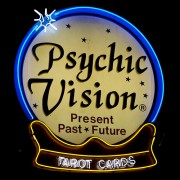By Diana Gomez
We’ve all heard the saying that there’s no such thing as bad publicity, but is it possible to go too far?
With information spreading farther and faster than ever, it can take just a few moments to tarnish a reputation, something countless celebrities have proven possible.
Here are five lessons we can learn from spotlight-seekers — and how to apply them to your own business.
Miley Cyrus: From Hannah Montana to Wrecking Ball
The baby-faced daughter of country star Billy Ray Cyrus won over our hearts as a Disney Channel star, but quickly grew into a magnet for scandal by getting high on camera, posing nude and engaging in X-rated antics onstage. While the star has alienated her loyal young fans and enraged protective parents, she’s whole-heartedly embraced her risky new image as a pop provocateur — going so far as orchestrating a fake storm of controversy surrounding her Bangerz tour.
Miley got the attention she wanted, but many fans have been left scratching their heads about what exactly she’s doing. Is she a marketing genius or just a hot mess? Either way, she’s standing on shaky ground.
Lesson learned: If you change your company’s image in a wholesale way, do it after careful consideration and full awareness of former customers you may alienate in favor of attracting new ones.
Sinead O’Connor: If you don’t have anything nice to say…
After being cited as an inspiration for Miley’s racy “Wrecking Ball” video, Irish singer Sinead O’Connor shot back with a series of open letters expressing her disapproval of the pop star’s actions. “You have enough talent that you don’t need to let the music business make a prostitute of you,” Sinead wrote in one letter. Miley responded by reposting a series of tweets Sinead had written two years earlier when she was seeking psychiatric help. Sinead followed up by demanding an apology and threatening Miley with legal action if she didn’t take down the tweets, saying she’d been subjected to media bullying.
This wasn’t Sinead’s first time in the hot seat. Most memorably, the buzz-cutted singer drew scorn for ripping up a photograph of the pope on Saturday Night Live in 1992. Her career fizzled out soon afterward, and her only headline appearances revolved around her personal life — most notably, a suicide attempt and a custody battle.
Lesson learned: Don’t start hurling criticisms unless you’re prepared to receive a few of your own.
Gwyneth Paltrow: Is honesty always the best policy?
When Gwyneth and her rock star hubby Chris Martin decided to separate, there was nothing quiet about it: The actress announced the split via her popular blog, GOOP. Gwyneth painted the divorce as a “conscious uncoupling,” then proceeded to explain their decision as a new, more progressive way of being in relationships. She may have been attempting to control the spin on the separation, but many people responded negatively, taking it as an example of how out-of-touch Gwyneth is.
Lesson learned: Tell the truth in times of crisis, but keep it simple. Spinning the story and adding details can dig your company into a hole.
Martha Stewart: Moving on
The world was shocked when domestic diva Martha Stewart was sentenced to five months in prison after lying to investigators about selling stocks. Ten years later, Martha’s media empire is still going strong — so strong, in fact, that it’s easy to forget about her prison stint altogether. Her magazines, books, TV shows and product lines are thriving. And while many doubted her ability to bounce back, Martha always knew she would.
“I was very confident,” she said in a rare interview with Matt Lauer last year. “When you know inside that you’re good, that you’ve done well, and that you are an honest person, you know you can live through disaster.”
Rather than focusing on the negative, Martha chose to remain confident and carry on with business as usual as soon as she’d served her term. And that approach has certainly worked out in her favor.
Lesson learned: If you suffer a setback, take the fall with grace and style, and your rebound will be that much easier.
Taylor Swift: The power of loyalty
Taylor Swift’s country-pop tunes dominate the airwaves, and it’s not just because they’re so darn catchy. The young star is frequently lauded as a marketing maven. For one, her ability to understand and cater to her massive fan base represents a valuable lesson in contact marketing.
And that connection with her fans is a huge part of her success.
Taylor is known for tracking down her most passionate followers and rewarding them with memorable experiences, and she’s extremely active on social media. When Taylor asks her army of fans to call in to radio stations and politely request her songs, you can bet that DJs across America are immediately bombarded.
Lesson learned: Know your audience, give them what they want and never take them for granted.
What other celebrities have stories with lessons that businesses can learn from?





